Should you use seaweed to grow cannabis plants?
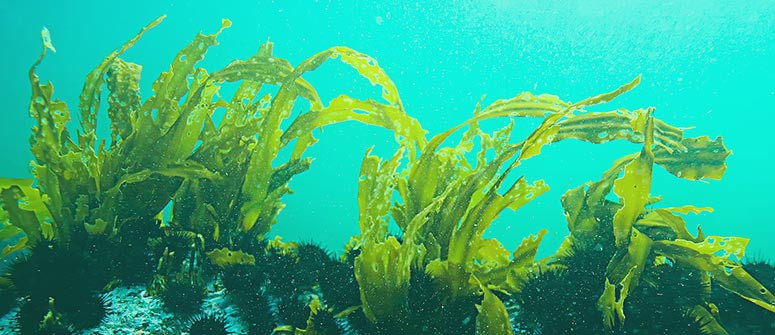
Using seaweed as a fertiliser is one of the best ways to boost the health and development of your cannabis plants. You can either buy it or collect it from the seashore, and you're likely to be impressed by the results. But what kind of seaweed works best for weed, and how should you apply it? Read on for answers to these questions and more.
Contents:
A good fertiliser can make the difference between a poor harvest and a bumper one! In this article, we look at seaweed, which is arguably one of the best cannabis fertilisers available. You can buy it in a range of different forms, or you can collect it yourself, for free!
Below, we explain the different types of seaweed fertiliser available, and how to use them in your cannabis grow.
What is seaweed?
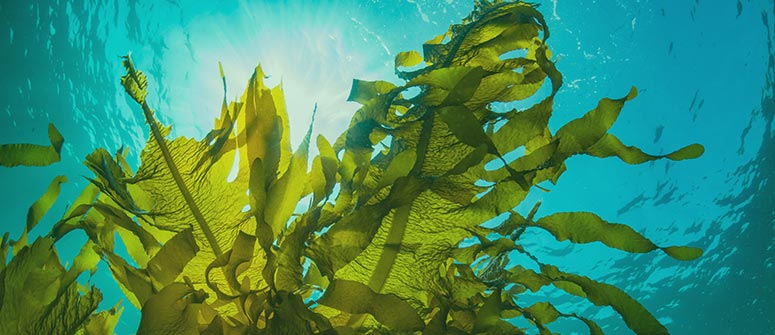
Seaweed is a generic name given to a range of red, green, or brown non-vascular aquatic plant life—i.e. algae. Seaweed can vary in size from a microscopic organism to gigantic Antarctic kelp measuring up to 30 metres in length!
Seaweeds are non-vascular, meaning they do not have internal vessels that transport nutrients around their bodies. Rather, they absorb everything they need directly from the water. For this reason, seaweed must remain in water if it is to survive. On the whole, seaweeds tend to be anchored to either the ocean floor or rocks—but some also float freely. They need water, nutrients, and carbon dioxide in order to survive. In fact, algae absorbs more carbon dioxide from the atmosphere than all the trees on Earth, so we must protect the seas!
What does seaweed do for cannabis?
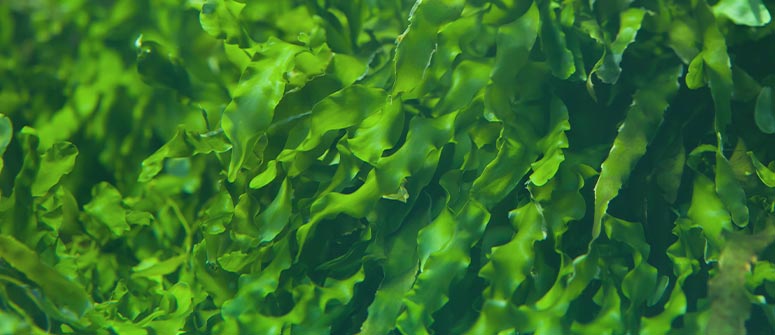
Seaweed is packed with goodness that can help weed plants thrive. It contains nutrients such as sulphur, magnesium, boron, calcium, and nitrogen, as well as a range of bioactive compounds like lipids, proteins, carbohydrates, amino acids, phytohormones, and antimicrobial compounds. Finally, it’s packed with vitamins A, C, B12, K, and E. You’re probably tempted to eat it yourself, right?
Delivering a massive dose of beneficial compounds to your plants is not the only way seaweed benefits cannabis cultivation. If dry seaweed is added to the topsoil, then, like mulch, it helps to trap moisture in the soil, which reduces the need to water and helps to keep the roots happy. On top of this, seaweed mulch helps to protect against unwanted plants taking root in your cannabis garden (which is especially useful outdoors).
And it doesn’t stop there. Seaweed has antimicrobial properties that help to protect your plants against pathogens. Be they bacteria, fungi, or parasites, seaweed can simultaneously help to keep negative growth at bay while stimulating the growth of beneficial bacteria within the soil!
Can seaweed be poisonous to cannabis plants?
For the most part, you needn’t worry about poisoning your cannabis plants with seaweed. That’s not to say that you shouldn’t be careful, though. As seaweed is so full of nutrients, overusing seaweed fertiliser has been linked to nutrient burn in some cases, especially in seedlings and young plants.
However, so long as you follow product instructions and don’t drown your plants in seaweed, you shouldn’t encounter any serious issues.
What is the best seaweed product for cannabis plants?
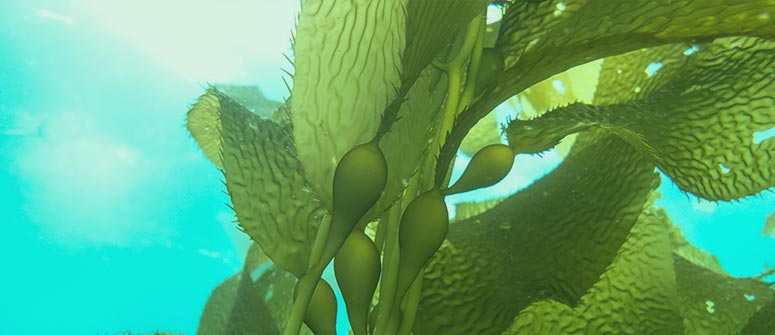
Kelp is generally considered the best seaweed fertiliser for growing cannabis. In fact, kelp pretty much contains everything that a cannabis plant needs to develop properly, and it even keeps the soil’s pH level in the correct range!
Even if you don’t know kelp by name, you’ve probably come across it one way or another. Kelp grows in underwater forests, preferring shallow, nutrient-rich waters. These forests, much like terrestrial forests, then become diverse ecosystems that support a plethora of other aquatic life forms. In order to use it as a fertiliser, kelp can either be harvested from the sea or collected from the seashore (which is worth doing yourself if you live by the ocean).
Kelp products for growing cannabis
There are different kelp products available for your cannabis grow, each with their own pros and cons. In what follows, we review the most common.
Kelp liquid
Kelp liquid contains the benefits of kelp in an easy-to-use solution. This is probably the most accessible form of seaweed fertiliser. Rather than being left to degrade on the soil, kelp liquid is added to water and given to the plant this way, reaching the roots very quickly. In this form, kelp can be used as a standard fertiliser.
Kelp meal
Kelp meal must be added to the soil in advance so it breaks down in time for the growing season. It is particularly well-suited to outdoor growing. Though it requires some forethought, using kelp meal is a great way to ensure that your soil is incredibly fertile by the time you begin growing, and should provide a solid base of nutrients throughout your plants' entire life cycle.
Kelp powder
Kelp powder is added to water and used as a foliar spray—meaning you spray it directly onto the fan leaves. This is probably the quickest way to get nutrients into your plant. Though not a solution for regular feeding, foliar sprays are fantastic if you notice your plant has a deficiency and needs a quick boost.
Where to source seaweed for cannabis
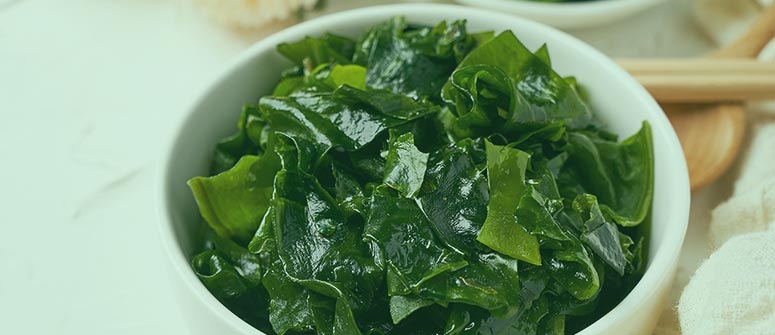
You have a few options when it comes to sourcing seaweed (kelp). You can, of course, buy it online or in gardening centres. This comes with the benefit of knowing exactly what you’re getting, and getting it in an easy-to-use form, such as those listed above. Moreover, you’ll know it’s of a high quality, and it will likely come with instructions for use too.
If you fancy getting out beside the sea and doing a little foraging, you can harvest your own! First, you need to find out if and where kelp grows nearby. Shallow, rocky waters are more likely to support kelp forests compared to deep or sandy shores. If you walk along the beach, you should be able to figure out pretty quickly whether there’s kelp nearby or not, as it will be washed up at the high-tide mark.
Kelp is broad, flat, and long. If it’s wet, it will be soft and slimy. Dead kelp should naturally collect on the high-tide line, where you can simply bag it up and take it home. Double check local laws to make sure that foraging kelp is legal where you live.
Note: Kelp is not the only seaweed worth harvesting for fertilisation purposes, so investigate what else nearby might be of use to you.
How to apply seaweed to your cannabis grow
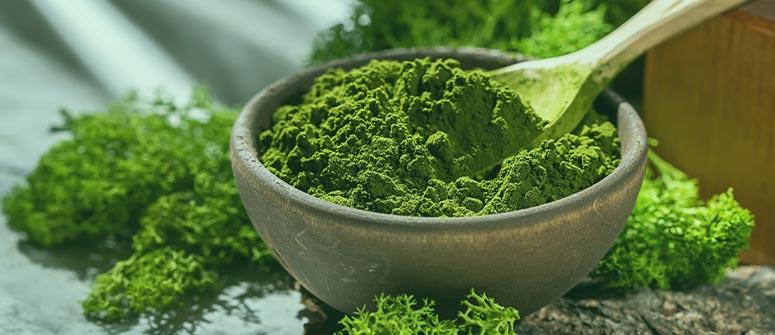
Depending on whether you bought or collected your seaweed, and its form, you will apply it in different ways.
How to use store-bought kelp
Store-bought kelp products are pretty straightforward to use, and tend to come with their own specific instructions.
Note: If growing autoflowering cannabis strains, the amount of kelp you administer should be reduced by as much as three-quarters, compared to photoperiod plants, to prevent nutrient burn.
Liquid
Liquid seaweed extract simply needs to be added to water. Amounts will vary from product to product, but if in doubt, around 1 teaspoon per 2.5 litres of water is usually sufficient. Whenever feeding cannabis plants, never risk overfeeding, as this has worse consequences compared to underfeeding. If in doubt, add a little less just to be safe.
Meal
Add kelp meal to soil at a volume of 0.5kg/9m³ around four months before you intend to plant your cannabis seedlings. This will give it ample time to break down, releasing all its goodness into the soil.
Powder
Around ½ teaspoon per 5 litres of water is sufficient for a foliar spray—it really doesn’t need much! Foliar feeding cannabis plants is just about getting enough nutrients into the plant to tide it over until you can fix the soil.
How to use self-collected seaweed
But what about seaweed you’ve harvested yourself? Using self-collected kelp is a little different, as you can’t just add it to water. Here are three options.
Mulching
This is the easiest method, and it has various benefits. Just layer the seaweed you’ve collected on the topsoil around your plant and allow it to degrade naturally. The nutrients will then travel deeper into the soil, where your plant’s roots can absorb them.
This method also helps to retain moisture in the soil, and protects against invasive plant growth.
Composting
You can also add seaweed to an existing compost bin, and let it release its nutrients into your compost. If you choose to go this route, mix it with the rest of the contents of the bin to ensure good airflow.
Liquid fertiliser
You can create your own foliar spray by leaving collected seaweed in a barrel or bucket of water until it has entirely broken down. Then, spray it over your plant to help protect it against pathogens and deliver doses of easy-to-absorb nutrients.
Using seaweed to grow weed
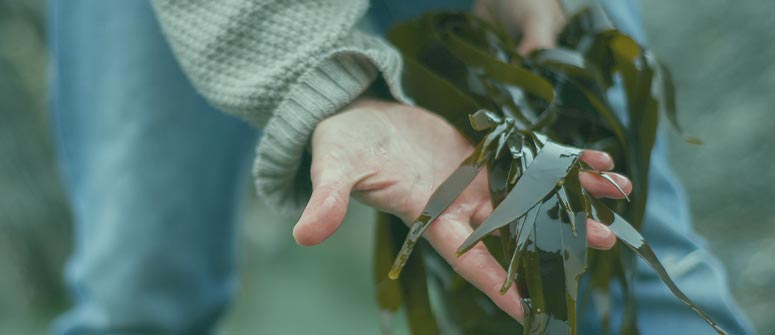
As you can see, kelp, and seaweed more generally, is perhaps the best option when it comes to fertilising your cannabis plants. Capable of giving them everything they need and maintaining a good pH level in the soil, there’s little reason not to give it a go!
.jpg)
.jpg)

.jpg)
